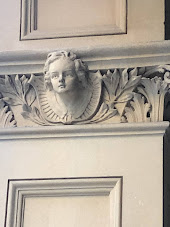Sydney Garden Palace - Macquarie Street - Sydney - New South Wales
The Sydney Garden Palace was a grand exhibition building that once stood in Sydney, New South Wales, Australia. Here's everything you need to know about the Sydney Garden Palace:
1. Construction and Purpose: The Sydney Garden Palace was constructed in 1879-1882 as the centerpiece for the Sydney International Exhibition, showcasing the achievements of industry and culture from around the world. It was designed by architect James Barnet in the Victorian architectural style and built in the Sydney Royal Botanic Garden.
2. Architecture and Features: The Garden Palace was an impressive structure, covering an area of approximately five acres (two hectares) and standing over 210 feet (64 meters) tall. It featured a combination of Romanesque and Byzantine architectural elements, with grand arches, domes, and intricate ornamentation.
3. Exhibition: The Sydney International Exhibition, held from September 1879 to April 1880, was a significant event in Sydney's history. The Garden Palace housed a vast array of exhibits, including industrial products, fine arts, agricultural displays, machinery, and cultural artifacts from various countries. It attracted visitors from Australia and around the world.
4. Destruction: Tragically, on September 22, 1882, just two years after the exhibition, the Garden Palace was destroyed by a massive fire. The fire, believed to have started in the basement, rapidly spread and consumed the entire building. The destruction of the palace was a significant loss to Sydney's architectural heritage.
5. Loss of Archives: The Garden Palace housed important collections and archives, including valuable Aboriginal artifacts, scientific specimens, historical records, and the New South Wales state library. Unfortunately, the fire resulted in the loss of much of this cultural heritage, making it a great tragedy for Australia's history and memory.
6. Legacy: Despite its short existence, the Sydney Garden Palace left a lasting impact on Sydney's cultural and architectural history. Its destruction highlighted the need for fire safety regulations and disaster prevention measures in public buildings. The loss of the archives and artifacts also underscored the importance of preserving and safeguarding historical and cultural treasures.
7. Commemoration: Today, the site where the Garden Palace once stood is marked by a monument known as the Garden Palace Ruins. The monument consists of a series of sandstone steps leading to a bronze plaque, commemorating the site and its historical significance.
The Sydney Garden Palace remains an intriguing part of Sydney's past, evoking the grandeur and cultural significance of the Sydney International Exhibition. While the physical structure is no longer standing, its memory serves as a reminder of the importance of preserving and cherishing cultural heritage



























